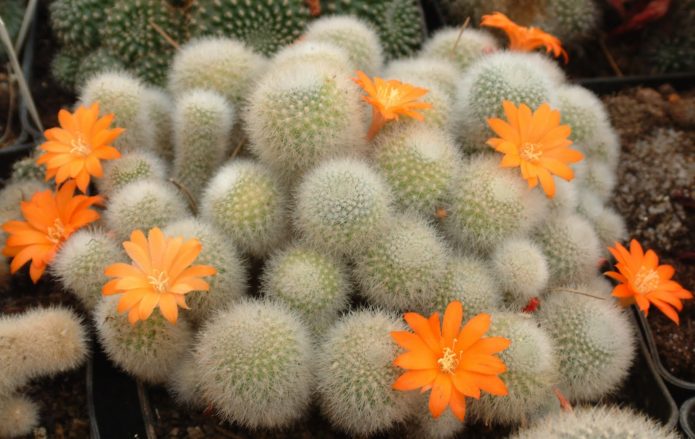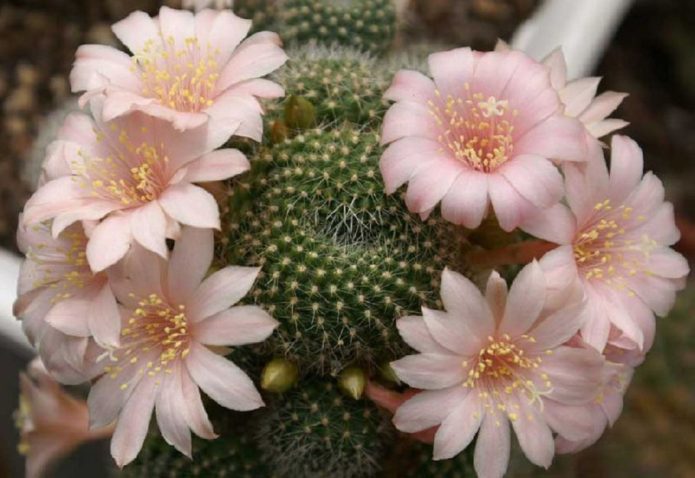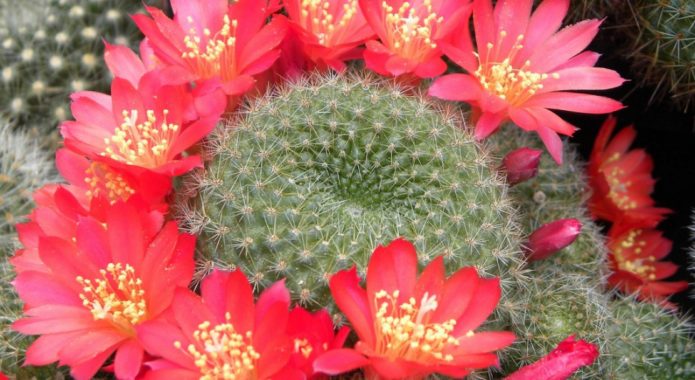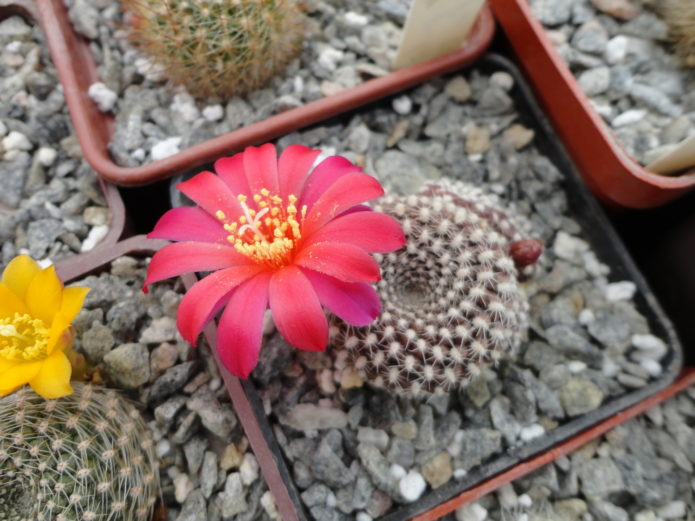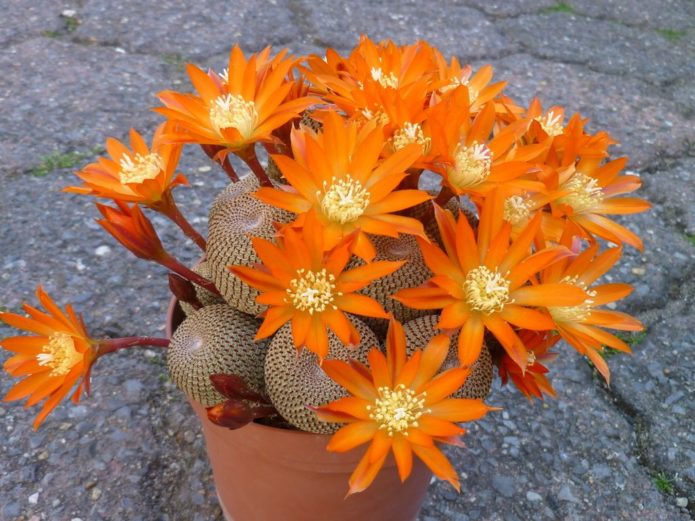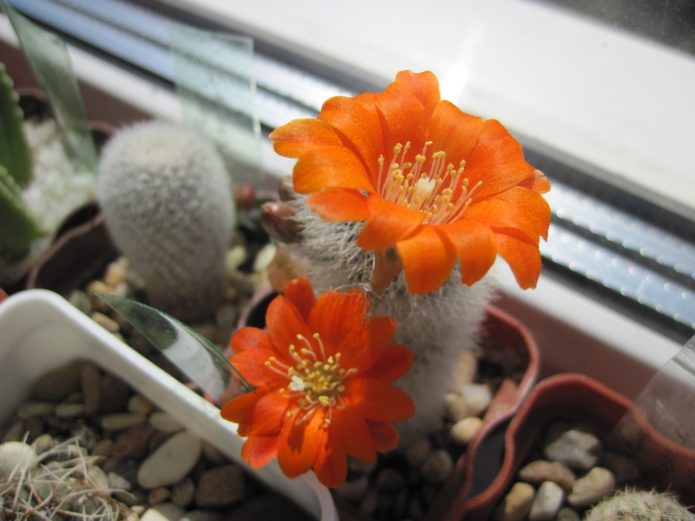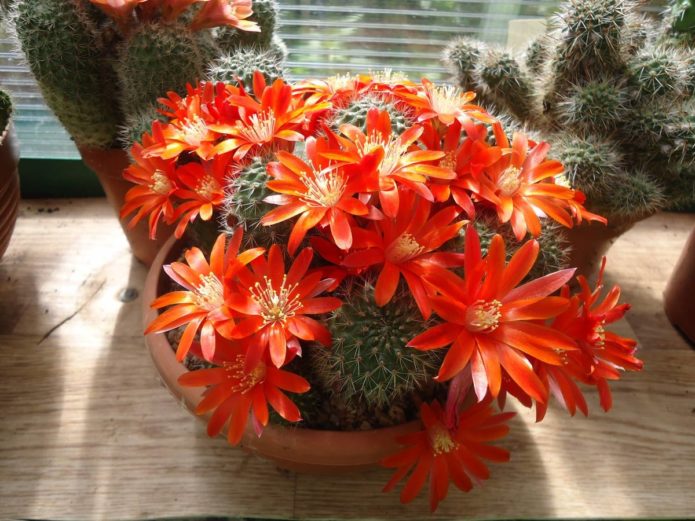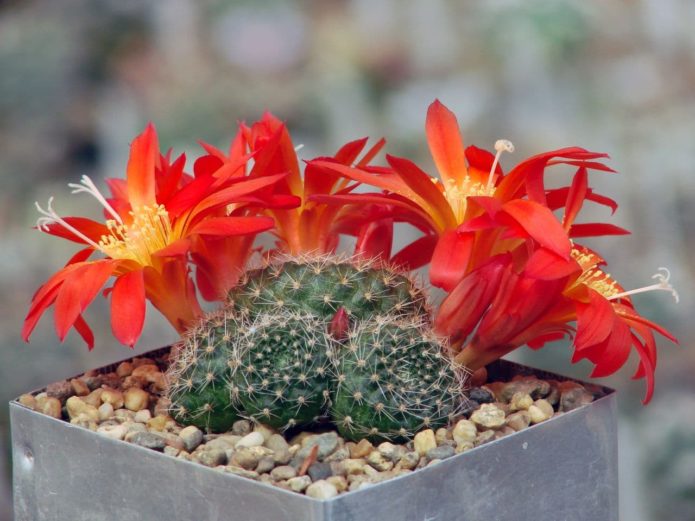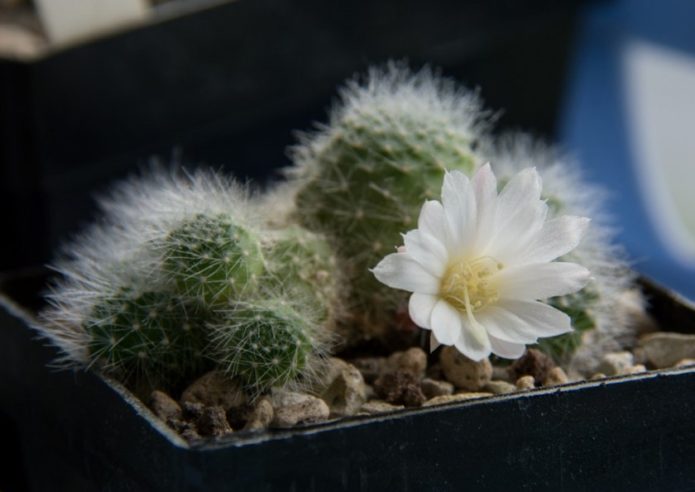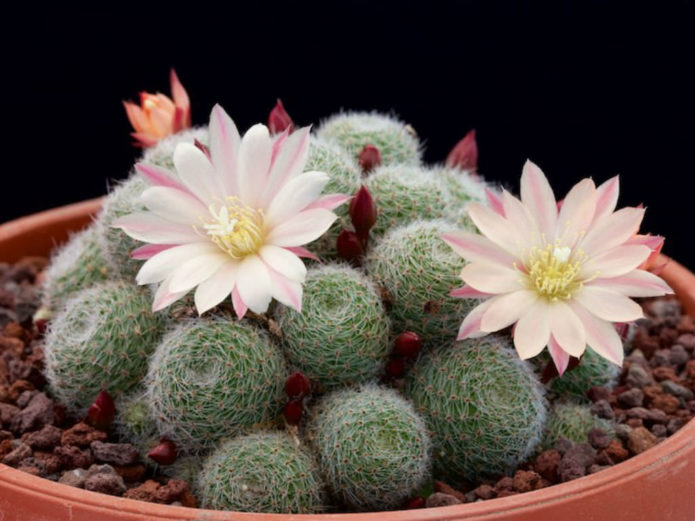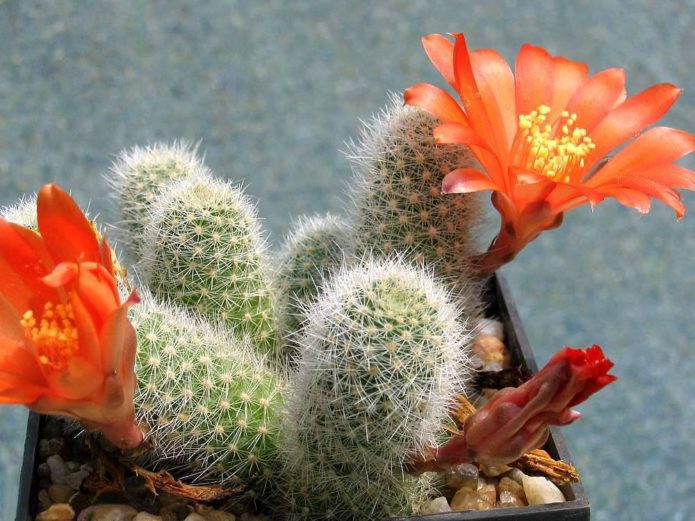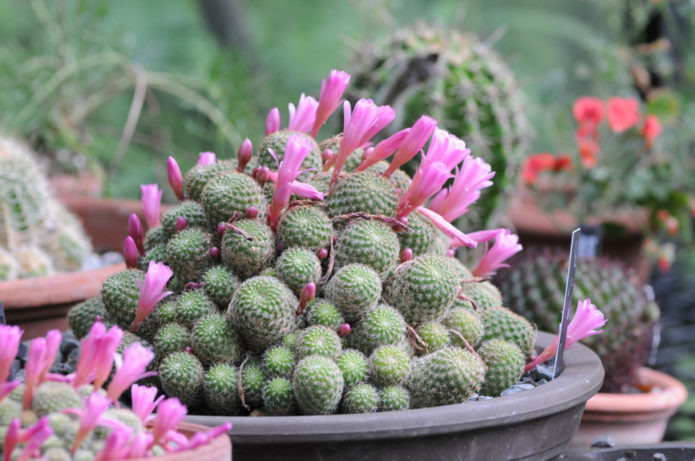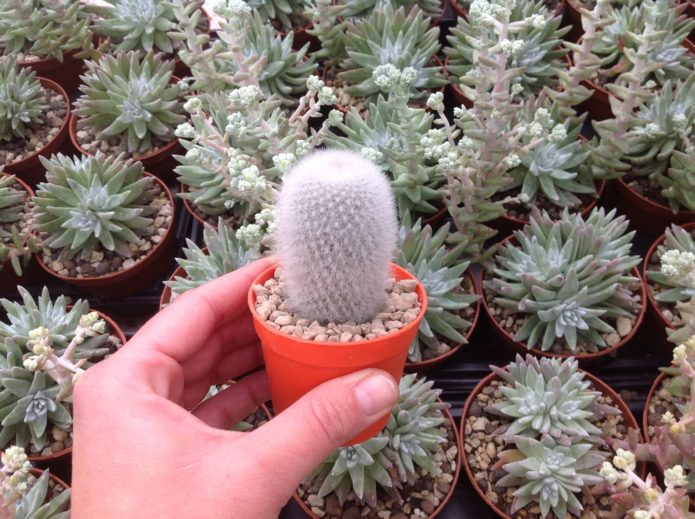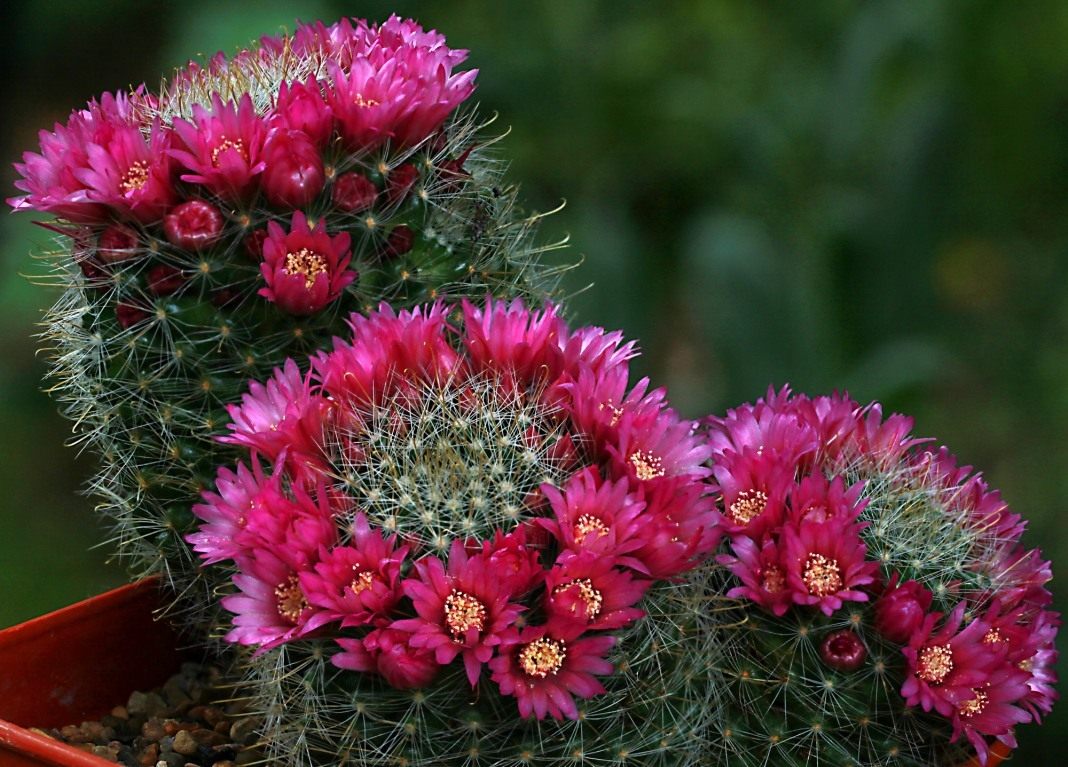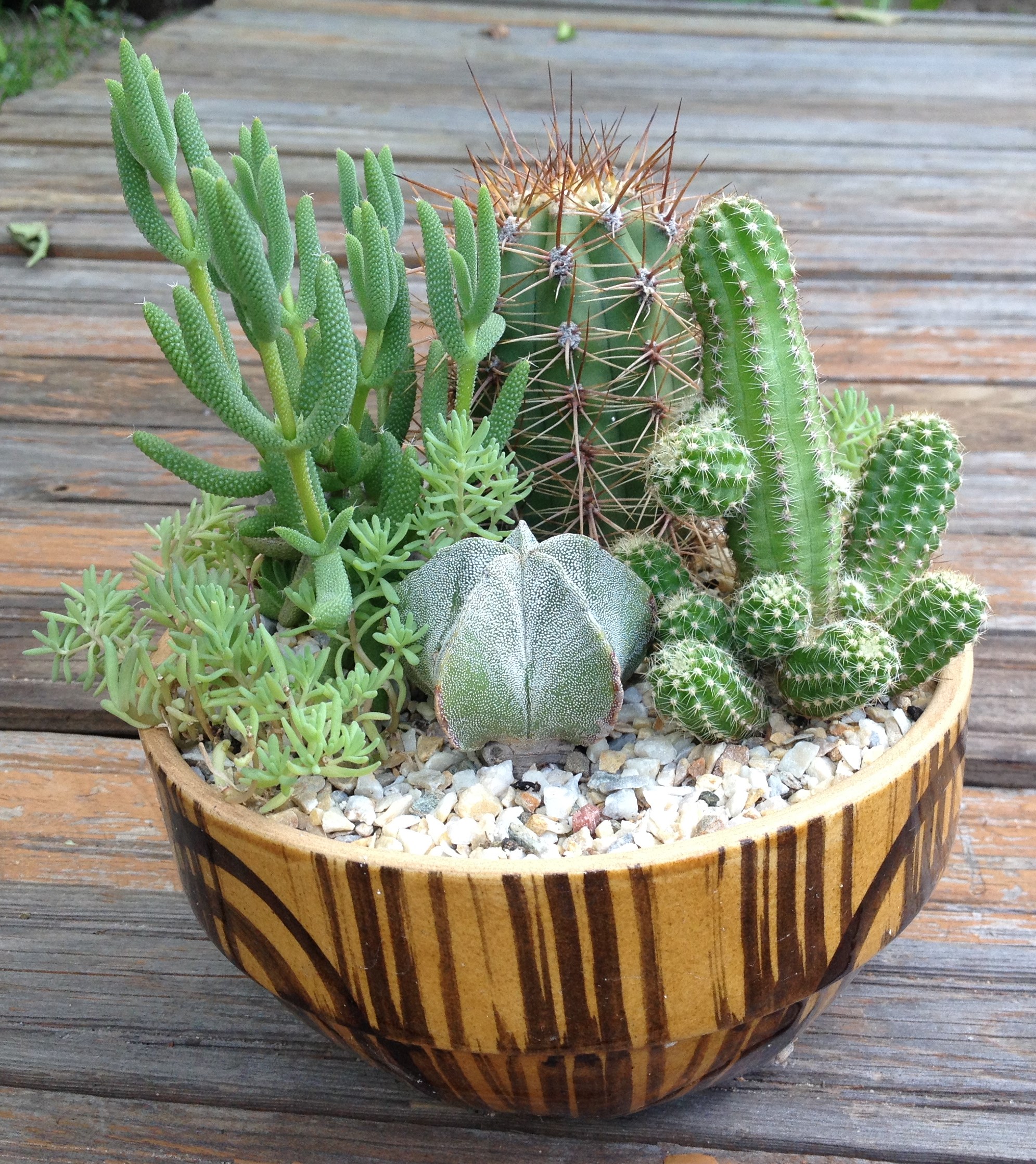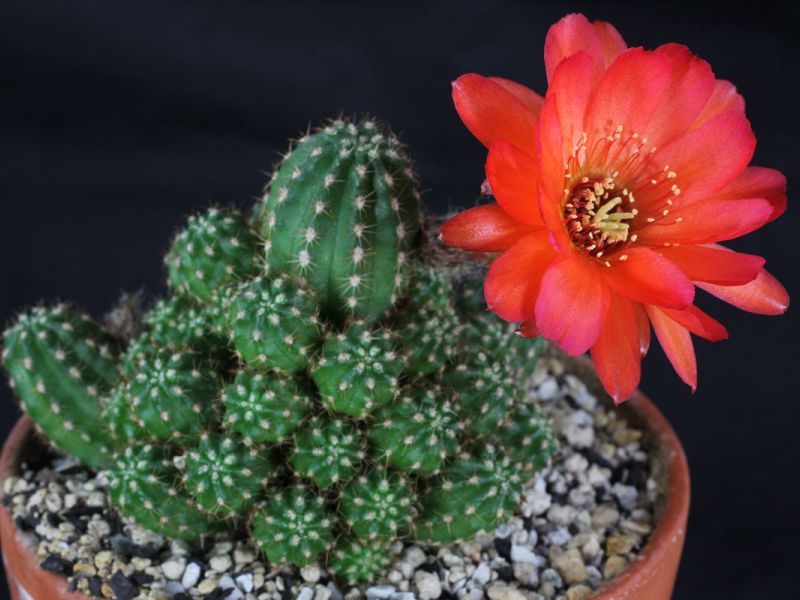Rebutia is a miniature cactus species with beautiful inflorescences of various colors. The plant is unpretentious, so even a beginner can handle its care and reproduction at home.
Content
Features of growing rebutia
Rebutia does not require special attention when grown at home. But still, some of the features of caring for this plant must be observed.
General information about the plant
Rebutia is a dwarf plant from the cactus family. In nature, there are more than 100 of its species. The homeland of this cactus is Argentina, but it is also found in the arid regions of America, Australia, Africa and Asia. Under natural conditions, Rebutia settles on rocky or sandy soils.
Rebutia is called a cactus for beginners for its ability to grow in almost any conditions. With minimal attention, this plant gives an abundance of children and blooms magnificently.
The cactus does not belong to poisonous plants, however, it is not recommended to place it in the children's room, since the child can get hurt on sharp thorns. The plant is not dangerous for animals.
The only way to use rebutia in landscape design is to plant it in the ground with a pot. Before the first frosts, the plant is brought into heat.
Signs and superstitions
Cacti are popularly considered a strong defense against otherworldly forces and any negativity. When placed in a kitchen, rebutia will absorb discord between family members. It is very good to keep the cactus in a hallway with good lighting. In this case, the thorns will take away all the negative energy from the visitors of the house.
You should not keep a cactus in the bedroom, especially directly next to the bed: numerous thorns can cause nightmares and insomnia. According to superstition, you cannot bring an adult plant into the house. Better to take a tiny scion and grow it yourself. Such a cactus is considered clean and has a beneficial effect on the atmosphere in the house.
Popular varieties for home breeding
Of all the variety of types of rebutia, only a few of them are most popular in home breeding.
Tiny rebutia (minuscule) is a plant with a miniature, flattened stem no more than 5 cm in diameter. Flowers are crimson or bright red. After flowering, the cactus forms small berries.
The rebutia of the marsoner has a spherical stem 4 cm in diameter and height, radially covered with small spines. The flowers are blood-red or yellow, up to 4 cm in diameter.
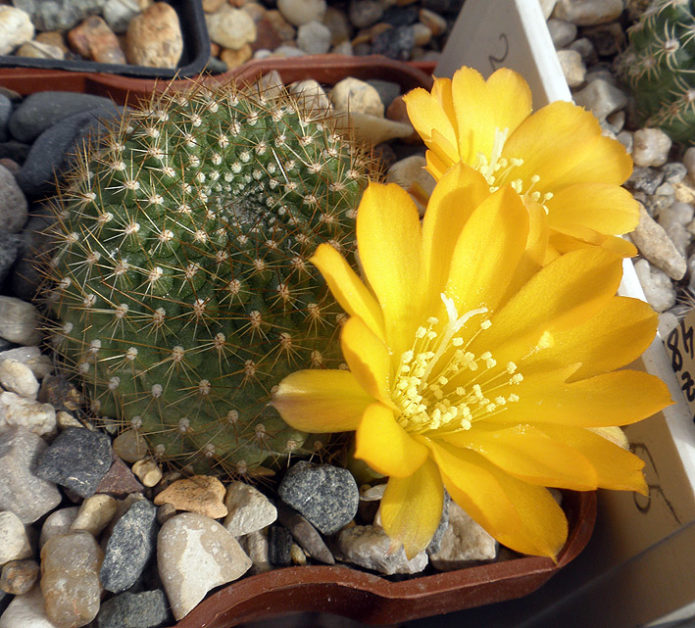
It is recommended to place the pot with the Marsoner's rebution on the windowsills on the south side
Senile rebutia has a stem up to 7 cm in diameter with many silvery radial spines.The flowers are deep red with a whitish pharynx.
Rebutia of Krajnza has a spherical stem up to 5 cm in diameter with tubercles on the edges, decorated with white areoles. The spines are short, whitish, and the flowers are red-violet, up to 4 cm in diameter.
Heliosis rebutia is a slightly elongated plant that grows rapidly. The flowers are bright orange.
Rebutia Fibriga is interesting for the contrast of bright orange flowers and snow-white thorns.
Rauscha's rebutia has a dark green spherical stem with a smooth surface and slightly prominent tubercles. The spines are short, black. The flowers are red-lilac.
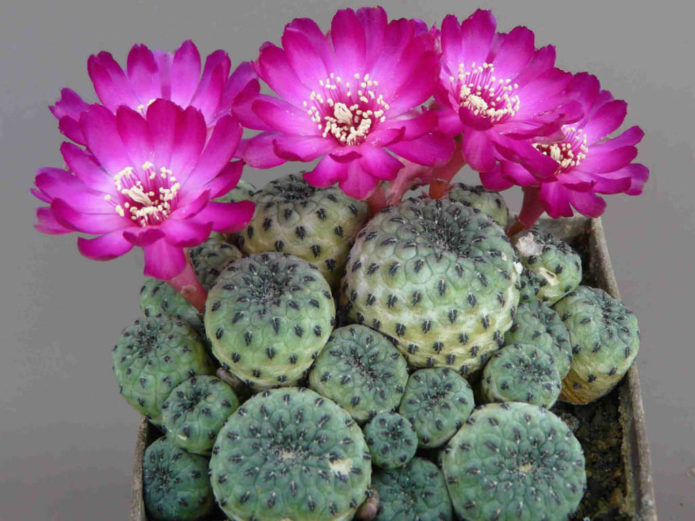
An adult plant can have up to a hundred buds, and flowering under favorable conditions lasts several months
Home care
Rebutia does not cause trouble for the grower when cultivated at home. The main task is to provide the plant with optimal lighting, humidity and temperature depending on the season.
Care depending on the season: table
| Season | Lighting | Humidity | Temperature |
| Spring | Bright, out of direct sunlight. | Moderate | + 20 to + 25 degrees |
| Summer | Preferably natural. | Moderate | + 25 - +35 degrees |
| Autumn winter | Scattered, preferably artificial. | Reduced | +10 to +12 degrees |
Features of watering and feeding
Rebutia does not tolerate waterlogged soil, so it is watered only after the top layer dries up by 2-3 centimeters. In winter, during the dormant period, the cactus practically does not need water. When kept in a cool room, it is enough to slightly moisten the soil every 30–40 days.
Plant feeding is carried out every two weeks from the beginning of April to the end of September. Fertilizers are chosen with a reduced nitrogen content and an increased calcium percentage. With an excess of organic matter in the soil, the plant's immunity decreases and the number of flowers decreases. The optimal ratio of nutrients in fertilizer for rebution:
- phosphorus - 18%;
- nitrogen - 8-9%;
- potassium - 25%.
Top dressing is administered exclusively in liquid form. In winter, the plant is not fertilized.
Formation and transplant
The rebutia abundantly forms children, which must be removed regularly. The appendages are removed by hand, without the use of sharp instruments. If this is not done, the mother trunk will begin to dry out and die in 3-4 years, which will negatively affect the decorative effect of the plant. From each child, you can get a full-fledged plant that blooms already in the third year after planting in a separate container.
For transplantation, use a special ready-made substrate or a self-prepared mixture of sand, sod and leafy soil. The rebution soil is needed as light as possible, breathable and permeable.
Cactus pots are chosen miniature. The maximum diameter is 8 centimeters. The preferred container material is ceramics. But subject to watering norms and good drainage, plastic pots are also suitable.
When transplanting, a drainage layer (expanded clay, fine gravel) is laid on the bottom of the pot by 1/3 of the capacity. Without adequate drainage, water in the soil will stagnate and roots will start to rot.
Differences in care during flowering and dormancy
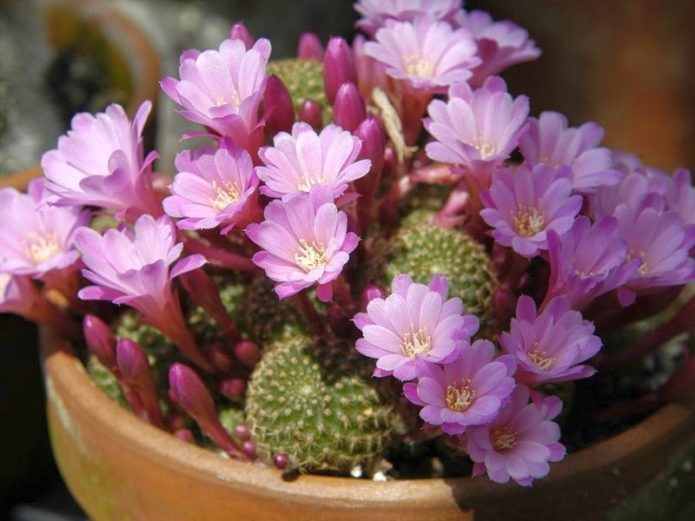
If the plant hibernates at a temperature of +22 and above, it will not enter the resting phase, and there will be no flowering in spring or summer
Keeping at low temperatures and low humidity is an important condition for the future flowering of a cactus. From about the end of January to the beginning of March, rebutia lays flower buds. If the soil is waterlogged during this period and the temperature is too high, the plant will not bloom in spring.
During flowering, an important condition for the well-being of the plant is regular watering. The soil in the pot should always be slightly damp, but not wet. For long-term flowering, light is important, but not an excess of sun. During this period, the rebutia is kept on the east, west windows or balcony.
Solving growing problems
The main problem of growing rebutia at home is the loss of decorativeness due to being kept in a dry, dusty room. From the accumulation of dust, succulents stop breathing and begin to dry. To prevent this from happening, the cactus is regularly sprayed with clean water.
When the soil becomes waterlogged, the cactus stem begins to rot. First, brown patches appear at the base, then the decay processes rise higher. Compliance with plant watering norms helps to prevent this problem, especially during dormancy.
Rebutia reacts to the lack of lighting by pulling the stem. With an excess of direct sunlight, dark brown spots appear on the surface of the cactus - burns.
Diseases and parasites
Waterlogging of the substrate in the pot leads to the defeat of the rebution stem rot. Softened brownish spots appear on the surface of the cactus. The parts of the stem affected by rot are carefully cut out with a sharp knife, and the wound is sprinkled with crushed charcoal.
If grown in a too dense substrate and excessive watering, the plant can be affected by root rot. It is impossible to save a cactus in this situation. It remains only to root the children, and dispose of the maternal stem.
The main pests of rebutia:
- mealy worm;
- spider mite;
- scabbard.
At the first signs of infection of a cactus with these parasites, the surface of the stem and soil is treated with insecticides: Aktara, Aktellik, Fitoverm.
Reproduction methods
Rebutia is propagated in vegetative and generative ways, each of which has its own characteristics.
Rooting babies
Each vegetative period, the maternal stalk of the rebutia forms 4–5 offspring or more. Babies are easily separated from the main plant and quickly take root in a loose substrate. Each shoot is slightly pressed into the soil, slightly sprayed with water on the surface, and the planting containers are placed in a well-lit place, but not in direct sunlight.
You can propagate rebutia by children from early spring to mid-autumn. The specimens grown from the shoots bloom in the third or fourth year.
Sowing seeds
The fruits of rebutia, formed after flowering, contain many small seeds. They can be used to propagate a cactus. Sowing is carried out in early March and it consists of the following stages:
- The seeds are disinfected for 10 minutes in a warm pale pink solution of potassium permanganate. Then they are dried.
- For sowing, prepare low, wide containers and fill them with a mixture of sand, soil and small stones in equal proportions.
- Seeds are spread over the surface of the substrate at a distance of 3 cm from each other.
- The crops are lightly sprayed from a spray bottle, cover the containers with a film and set in a bright place. Germination temperature - 22-23 degrees.
- When the first shoots appear, the film is removed.
- Seedlings grown up to a height of 1.5–2 cm are placed in separate pots with tweezers.
Video: Blooming cactus rebutia (timelapse)
The miniature, profusely blooming rebutia looks good in separate containers, in the florarium and as a complement to higher species of cacti and other indoor plants.
